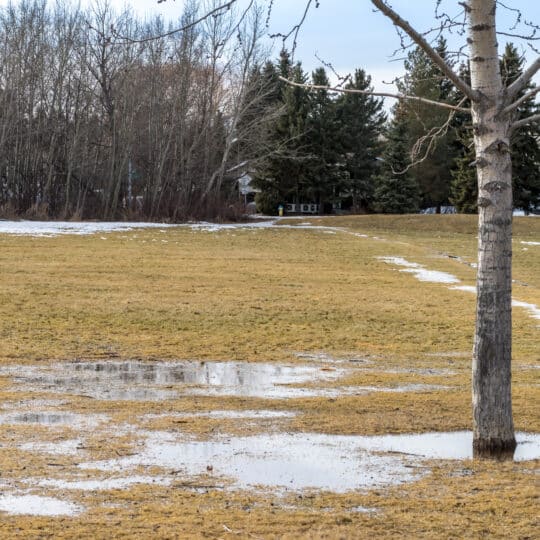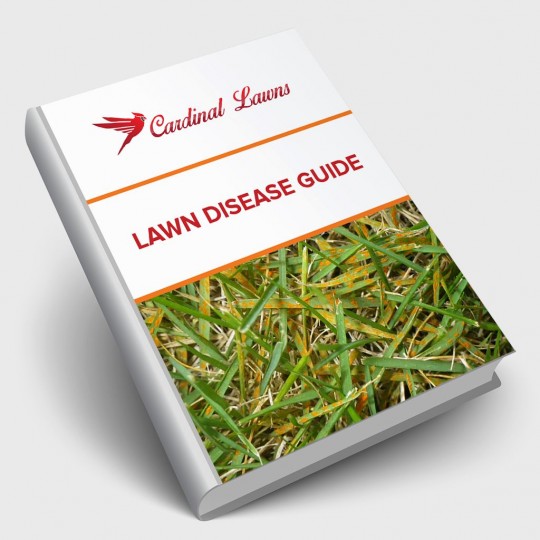Ways to Tell if the Grass is Dead or Dormant
And What to do Either Way
Posted
November 16, 2023

Spoiler alert! Now that the weather is getting colder and dormant season is around the corner, your grass may turn slightly brown. Or all brown. But don’t worry! Here’s how to tell the difference between dead versus dormant grass.
Similar Signs
Whether you have turf, cool-season grass, or a grass-like plant, there’s a possibility it will turn brown during dormant season. However, before you go overboard on trying to breathe life back into your backyard, it’s important to make sure whether your grass is actually dead or not. If you try to fix the wrong issue, you could end up doing more damage to your yard.
Both dead and dormant grass typically turns a dry, brownish color, stops growing, and shows signs of thatch. However, there are more signs to consider to determine whether or not your grass will grow back or if you need to reseed.
Dead Versus Dormant Grass
Before your fret over your brown yard, consider a few things first:
- The season. Grass goes dormant in the summer and the winter to conserve water and nutrients.
- The weather. Grass is stressed in high heat and freezing temperatures, so it goes into a dormant state to help protect itself and preserve energy.
- The type of grass you have. Cool-season grass is more likely to go dormant in the summer since it prefers the cooler temperatures.
Any of these factors contribute to grass going dormant, which means it may be brown but it’s still very much alive. Dormancy helps conserve energy in the roots so it can bounce back in better conditions. Other signs your grass is dormant include:
- It perks up after watering
- Sections don’t lift easily
- Roots are white
If your grass is dead, you would notice the opposite effect. It won’t bounce back after watering, but sections will lift easily from the soil. While weather has an impact on grass health, it’s not the only reason your lawn looks drab.
- Disease. Fungus, mold, and mildew can happen when grass isn’t properly cut, overwatered, or poorly drained. Leaving debris on your lawn also attracts disease. In this case, your grass won’t only be brown. There could be streaks of white, black, and red running through the blades.
- Pests. From grubs and insects to groundhogs and squirrels, many pests dig, burrow, and feast on grass blades and roots.
- Poor maintenance. Cutting grass too short or leaving it too long both have negative effects.
- Weeds. Left untreated, weeds can take over your lawn and smother grass roots. Dead patches of grass is a great place for more weeds to grow, continuing the cycle.
What to Do
If after evaluating your grass and considering the current conditions, if it’s found your grass is dormant, there’s nothing extra you need to do. Dormancy is a natural occurrence you can’t prevent and don’t need to treat. However, proper maintenance is still important to ensure your grass doesn’t eventually die.
To keep your lawn in fighting shape, focus on the following:
- Irrigation. The right amount of water is critical since it’s possible to both over and underwater your lawn.
- Aerating. Help improve air flow, drainage, and nutrient absorption.
- Mowing. Determine the optimal height for the type of grass you have and only cut when needed.
- Awareness. Now that you know the signs of diseased or dead grass, treat when necessary.
It’s never too early or too late to get your grass is great shape. Contact Cardinal Lawns to evaluate your yard and help determine how it should look this season. Our lawn care experts can put a maintenance plan in place so you can easily tell when it’s dormant and when it’s time to act.

Download Your FREE Lawn Disease Guide
Even the most manicured landscapes are susceptible to lawn disease. Take some time to learn about identification and removal before one takes over your lawn. This handy guide teaches you how to spot common lawn diseases as well as how to properly treat them.